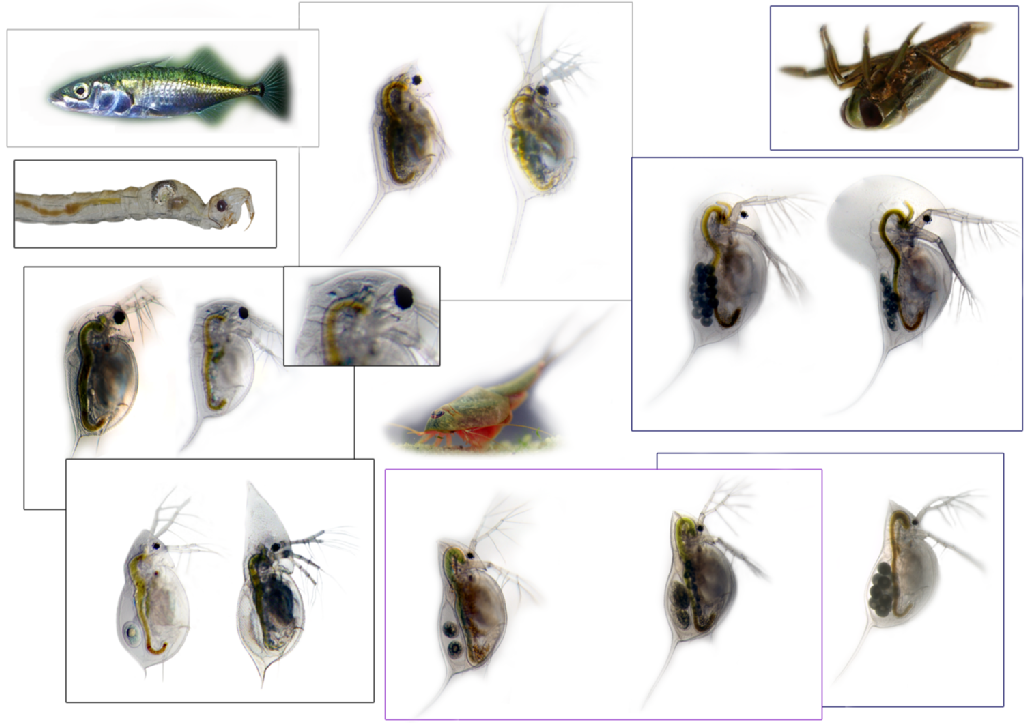Predator induced defenses
By adjusting their phenotype, organisms maximize their fitness in response to changing environmental factors, e.g. predation. In turn, prey organisms express defences that oppose the current predatory threat and increase survival chances of the individual. These, so-called inducible defences can manifest as behavioural, morphological or shifts in life-history parameters and are elicited upon the perception of predator-specific chemical cues called 'kairomones'. All of these inducible defensive strategies incur costs that are saved when the defence is not essential. In addition, costs are kept at a minimum, as many species scale their defences to the predation risk and the magnitude of defence formation is directly correlated with the concentration of predator kairomones. Kairomones, which are advantageous for the receiver but not the sender, are produced and released by the feeding predator. Most importantly, in order for inducible defence strategies to be advantageous, the costly time lags between kairomone perception and defence formation need to be minimal.
I am interested in how organisms perceive an increased predation risk and subsequently adjust development, which results in the expression of adaptive morphological features.
